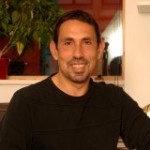Smartphone owners know all about battery anxiety: Spend too long playing games and the battery icon flashes ”empty” the next time you need to make a call. For drivers of electric cars, the problem is more serious: They can’t just walk over with a 20-liter jug of electricity from the nearest charging station, and even if they do manage to glide into a station on their last electrons, it could take hours to top off a car battery. Continue reading EV Battery Swapping’s First Real Test
Tag Archives: Entrepreneurs
Start-ups Try to Capture Road Traffic’s Excess Energy
Visitors to aerospace engineer Haim Abramovich’s office at the Israel Institute of Technology, in Haifa, once asked if they could run a freight train over his latest invention. Abramovich didn’t blink: The visitors were from Israel’s National Road Company, and they wanted to know whether his piezoelectric material—which he developed to warp aerodynamic surfaces at the command of an electric current—would instead generate power if embedded beneath rumbling roads and rails.
Abramovich, who had just launched start-up Innowattech to develop wearable microgenerators for powering mobile devices, was convinced the road and track were better homes for his technology. So the company “turned around 180 degrees,” he recalls, and figured out how to embed piezoelectric material beneath a road. Now, along with several other inventive start-ups, Innowattech is poised to harvest some of the spare kinetic energy of the world’s moving vehicles—call it the kinetic surplus.
Read the rest of this news story on IEEE Spectrum’s website: [html] or here [pdf].
Transferring Skills to Tech Transfer
 Dermot Leonard’s first experience with technology transfer was as a mechanical and manufacturing engineering student in 2002. He and his teammates at Queen’s University in Belfast, U.K., won £10,000 in a Northern Ireland Science Park competitionfor their business plan to develop and market a self-powered medical pump. The invention never made it to market, Leonard says: The team took a half-hearted stab at marketing their idea–but then they graduated. They spent the rest of the money paying off student loans.
Dermot Leonard’s first experience with technology transfer was as a mechanical and manufacturing engineering student in 2002. He and his teammates at Queen’s University in Belfast, U.K., won £10,000 in a Northern Ireland Science Park competitionfor their business plan to develop and market a self-powered medical pump. The invention never made it to market, Leonard says: The team took a half-hearted stab at marketing their idea–but then they graduated. They spent the rest of the money paying off student loans.
Creativity and Persistence Overcome Failure
 Tony Kouzarides tells the story of his early career as a comedy of errors. He started his Ph.D. at the University of Cambridge in the U.K. in 1981 studying the cancer-inducing potential of human cytomegalovirus. After a year of inserting part of the virus’s DNA into target cells, the cells showed almost no signs of cancer. He couldn’t rule out that other parts of the virus might do it, but he also couldn’t publish his early results. What he could publish by the end had more to do with genetic sequencing, an area he did not want to pursue.
Tony Kouzarides tells the story of his early career as a comedy of errors. He started his Ph.D. at the University of Cambridge in the U.K. in 1981 studying the cancer-inducing potential of human cytomegalovirus. After a year of inserting part of the virus’s DNA into target cells, the cells showed almost no signs of cancer. He couldn’t rule out that other parts of the virus might do it, but he also couldn’t publish his early results. What he could publish by the end had more to do with genetic sequencing, an area he did not want to pursue.
After a short postdoc at Cambridge sequencing cytomegalovirus, he landed a second postdoc in a lab in New York studying oncogenes. There, he spent 2 years developing an unconfirmed and unpublishable hunch. On the strength of that record, he deadpans, he unsuccessfully applied to lead his own research group.
Continue reading Creativity and Persistence Overcome Failure
